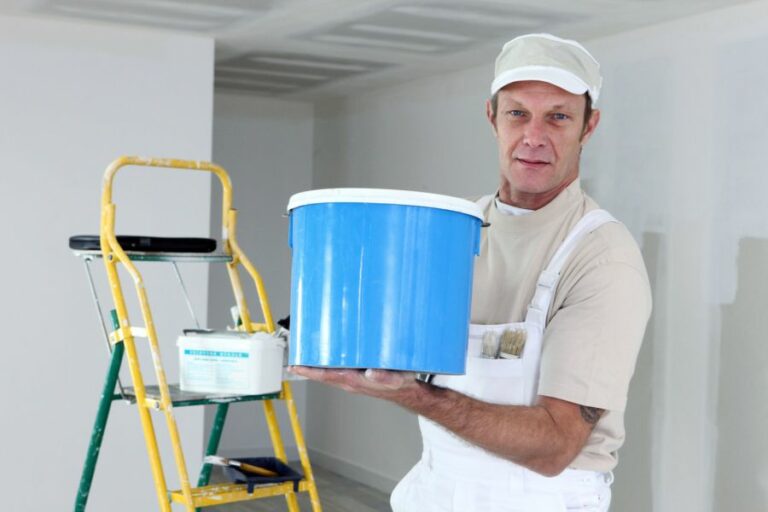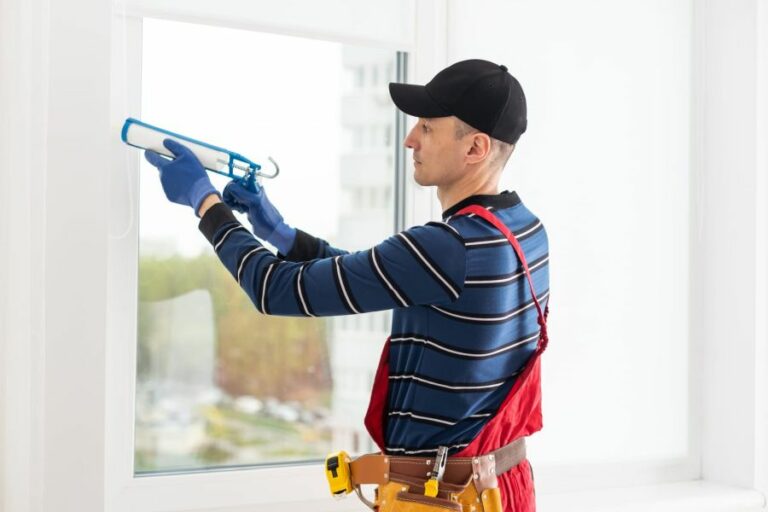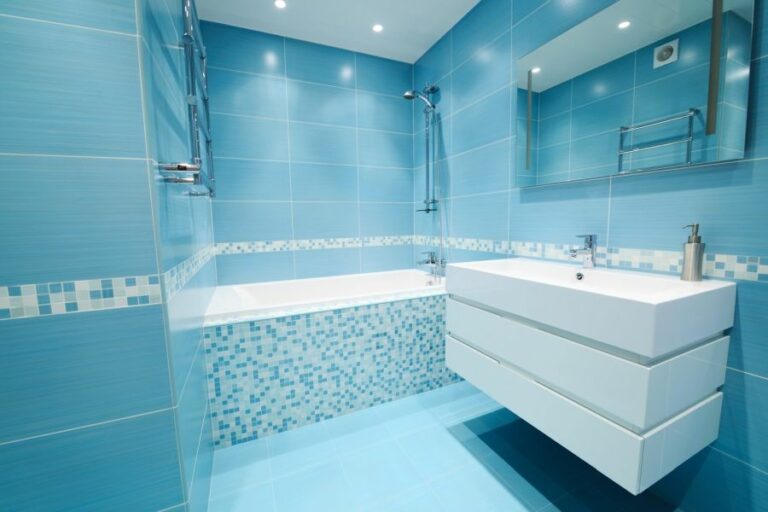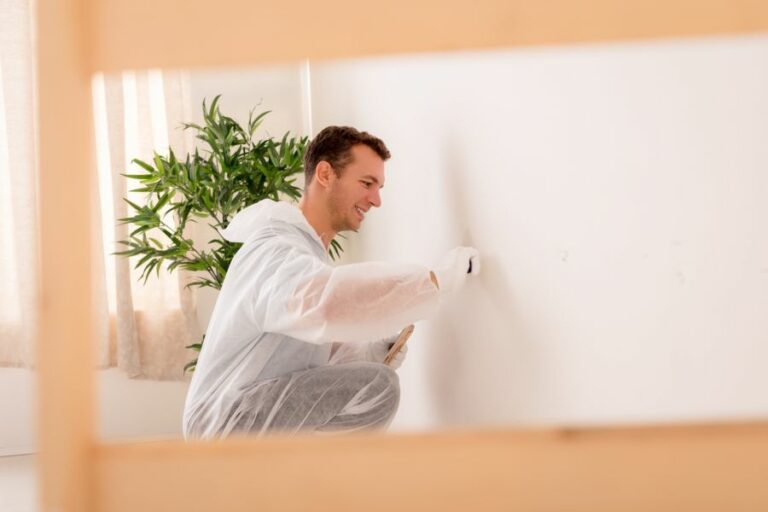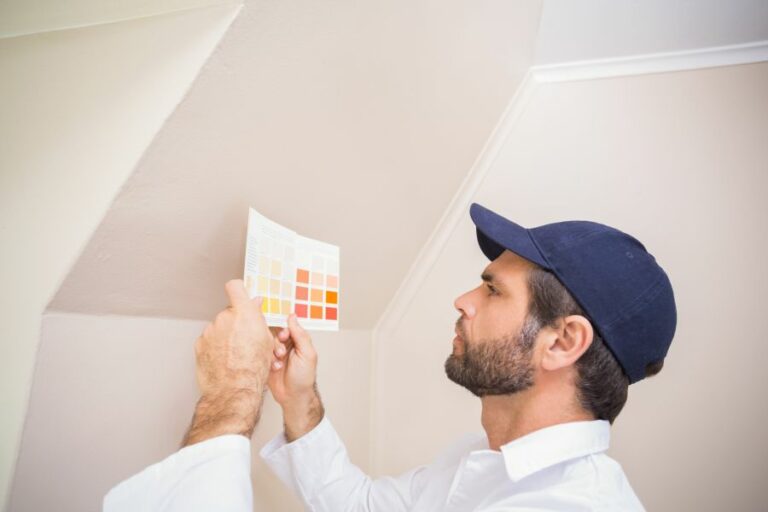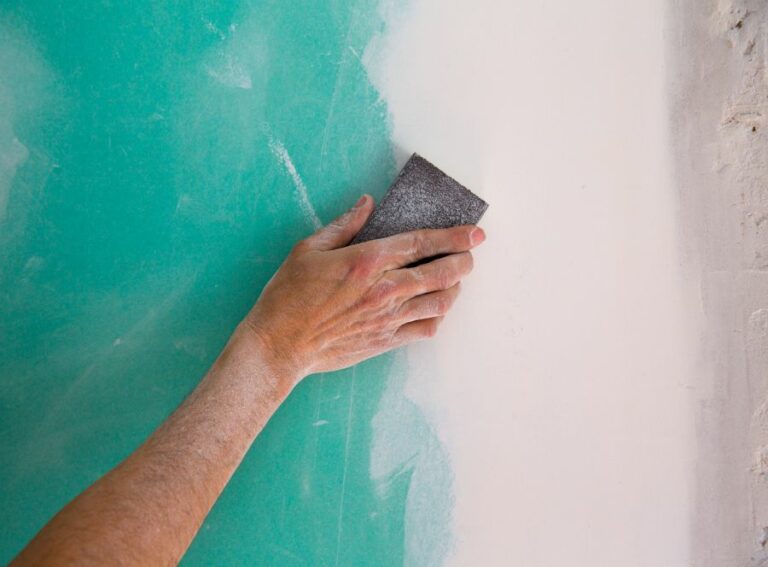Best Climate Settings For Surface Prepping. What Pros Say
Are you finding it challenging to achieve the perfect surface prep before painting or coating applications? Worry no more, as we have gathered all the essential factors for determining the best climate settings for your prepping needs. By understanding the optimal temperature, humidity, and weather conditions, you can ensure an excellent foundation for that perfect finish.
Best climate settings for surface prepping:
The optimal climate settings for surface preparation are a temperature between 50°F (10°C) and 85°F (30°C), humidity between 40% and 70%, controlled drying and curing times, and properly managed wind and air movement. These conditions ensure strong adhesion, performance, and longevity of applied materials.

Ready to find the perfect climate conditions for surface prepping? Our comprehensive guide is here to help! We’ve got crucial tips on temperature, humidity, and more that’ll ensure your project’s success. Read on to unveil the secrets and achieve flawless surface prep!
Contents
- 1 Optimal Climate Conditions for Surface Preparation
- 2 Perfect Weather for Coating Application: A Guide
- 3 Key Environmental Factors for New Surface Paint Prep
- 4 Ship Surface Preparation for Painting: Tips & Techniques
- 5 Metal Surface Preparation: Methods & Best Practices
Optimal Climate Conditions for Surface Preparation
Surface preparation is an essential step in ensuring a successful coating or painting project. Properly preparing surfaces ensures strong adhesion, optimal performance, and longevity of the applied material.
• Temperature and Surface Preparation
– Ideal Temperature Range
Temperature plays a significant role in surface preparation. The optimal temperature range for most surface preparation tasks, such as sandblasting or pressure washing, is between 50°F (10°C) and 85°F (30°C).
It is within this temperature range that most coating materials, including paints, primers, and sealers, can adequately bond to the surface.
If you are working with specific materials, always refer to the manufacturer’s guidelines, as some materials may require unique temperature settings.
For example, according to the US Department of Energy, expanding spray foam used for air sealing works best when applied at temperatures between 60°F (16°C) and 80°F (27°C).
– Temperature Extremes to Avoid
Working at exceptionally high or low temperatures can cause problems in the preparation process and compromise the quality of the final result. Here are two temperature extremes to avoid:
- Below freezing: Working at temperatures below freezing can cause condensation or frost to form on surfaces, impacting the adhesion of coatings. Additionally, certain materials may become brittle or crack in cold temperatures.
- Extreme heat: High temperatures can cause materials to cure too quickly, leading to improper bonding, cracking, or blistering. High heat can also lead to operator fatigue and injury.
• Humidity and Surface Preparation
– Ideal Humidity Range
Relative humidity, or the amount of moisture in the air, is a significant factor in surface preparation. The recommended humidity range for most surface-prepping tasks is between 40% and 70%. Within this range, surface moisture is minimized, and coating materials can dry and cure properly.
– Humidity Extremes to Avoid
Similar to temperature, extreme humidity levels can negatively impact surface preparation. Keep the following humidity conditions in mind:
- Low humidity: Very dry conditions can lead to rapid curing of materials before proper adhesion can occur. Low humidity can also cause static electricity buildup, which can be dangerous during surface prepping.
- High humidity: High levels of moisture in the air can cause poor adhesion, blistering, or mildew growth. In addition, high humidity increases the likelihood of condensation forming on surfaces, leading to a longer drying time for coatings.
• Drying Time and Surface Preparation
A key consideration when selecting climate settings for surface preparation is the required drying or curing time for materials. After prepping the surface, it is crucial to allow enough time for materials to dry or cure properly.
Refer to the manufacturer’s guidelines for recommended drying and curing times and keep climate settings within the recommended range during this time.
• Wind and Air Movement
While not a direct climate setting, wind and air movement can impact surface preparation. Excessive wind can cause materials to dry unevenly or too quickly. Additionally, windblown debris can contaminate surfaces during preparation.
To mitigate these issues, it is recommended to shield the work area from direct wind or create a controlled environment with proper air circulation.
• In Closing
In summary, the best climate settings for surface preparation are:
- Temperature between 50°F (10°C) and 85°F (30°C)
- Humidity between 40% and 70%
- Controlled drying and curing times
- Properly managed wind and air movement
Following these guidelines will help ensure that your surface preparation is successful and results in a high-quality coating application. Remember to consult manufacturer guidelines for specific materials and adhere to any additional recommendations they provide.
Parameter | Recommended Setting |
|---|---|
Temperature | 64-75°F (18-24°C) |
Humidity | 40-60% |
Airflow | Low, consistent |
Lighting | Natural, diffuse |
Perfect Weather for Coating Application: A Guide
• Introduction to Coating Application
Coating application is a critical process in various industries such as automotive, aerospace, construction, and marine. It provides protective and aesthetic benefits to surfaces by improving their durability, corrosion resistance, and visual appearance.
However, for a coating to perform effectively, it is essential to apply it under suitable weather conditions.
• Temperature: Optimal Range and Impact on Coating
One of the critical factors to consider while applying the coating is the ambient temperature. The optimal temperature range for most coatings is between 60°F (15°C) and 80°F (27°C). Temperature significantly impacts the curing time, adhesion, and overall performance of the coating.
– Effects of High Temperature
Applying coating in high-temperature conditions can cause several issues:
- Faster solvent evaporation: This can lead to the formation of bubbles or blisters, reducing the adhesion of the coating to the substrate.
- Reduced open time: The coating dries too quickly, resulting in a poor finish and difficulty in maintaining a wet edge during application.
- Increased viscosity: A thicker or more viscous coating requires more effort to apply and may not level out properly.
– Effects of Low Temperature
Low temperatures can also negatively impact the coating application process:
- Longer curing time: The coating may take a longer time to dry, extending the project timeline and increasing the risk of contamination.
- Reduced adhesion: The coating may not adhere well to the substrate, causing it to peel or flake over time.
- Increased viscosity: A thicker or more viscous coating requires more effort to apply and may not level out properly.
Recommendation: Ensure that the ambient temperature falls within the product’s recommended range mentioned in the manufacturer’s guidelines before proceeding with the coating application.
• Relative Humidity: Importance and Impact on Coating
Another crucial factor to be mindful of while applying coatings is relative humidity (RH). The ideal RH range for most coatings is between 40% and 70%. It is essential to control RH because it can influence solvent evaporation, curing rate, and the formation of surface defects.
– Effects of High Humidity
Applying coating in high humidity conditions can lead to the following issues:
- Slow curing: High moisture levels can slow down the evaporation of solvents, prolonging the drying time and increasing the chances of contamination.
- Blushing: Excess moisture can react with certain coating components, causing a milky or hazy appearance on the surface.
- Poor adhesion: High humidity can interfere with the adhesion of the coating to the substrate, resulting in reduced durability.
– Effects of Low Humidity
Low humidity conditions can also affect the coating application process:
- Rapid solvent evaporation: This can manifest as the formation of bubbles, uneven film formation, or poor finish quality.
- Reduced open time: The coating might dry too quickly, making it difficult to maintain a wet edge during application and leading to an uneven finish.
Recommendation: It is advisable to check the local weather forecast to determine the relative humidity levels before starting the coating application process. Also, consider using specialized equipment like dehumidifiers to regulate moisture levels, if necessary.
• Wind Velocity: Influence on Coating Application
Wind velocity can affect the coating application process, particularly in outdoor projects. The ideal wind conditions for applying coatings are still to light air, with wind speeds less than 8 mph (3.6 m/s). High wind speeds can disrupt the coating application by causing the following issues:
- Overspray: Wind can carry the coating particles to unintended surfaces, resulting in waste of material and contamination.
- Rapid solvent evaporation: Higher wind speeds can accelerate the drying process, leading to uneven film formation, pinholes, or a poor finish.
Recommendation: It is best to avoid applying coatings during windy conditions or take necessary precautions, such as setting up wind blocks or adjusting the spraying equipment to minimize overspray.
• Dew Point: The Underrated Factor in Coating Application
The dew point is the temperature at which air becomes saturated with moisture, and water droplets begin to form on surfaces. Applying coating when the surface temperature is close to or below the dew point can lead to moisture-related issues such as poor adhesion, blushing, and coating failure.
Recommendation: Ensure that the surface temperature is at least 5°F (3°C) above the dew point during the application and curing process.
You can use a dew point calculator available on reputable websites, such as The Engineering ToolBox, to determine the dew point based on temperature and relative humidity.
• Conclusion
To achieve an effective and long-lasting coating, it is essential to apply the coating under ideal weather conditions, considering factors like ambient temperature, relative humidity, wind velocity, and the dew point.
By adhering to the manufacturer’s guidelines and monitoring weather conditions during the application process, you can ensure a successful coating job that provides optimal performance and durability.
Key Environmental Factors for New Surface Paint Prep
Proper surface preparation is crucial to the success of any painting project. Before you apply paint to a new surface, you need to consider a variety of environmental factors to ensure a high-quality finish.
• Temperature and Humidity
– Ideal Temperature Range
Temperature plays a significant role in the drying and curing process of paint. The ideal temperature range for most paint applications is between 50-85 degrees Fahrenheit (10-30 degrees Celsius).
Applying paint outside of this range can lead to problems with adhesion, drying time, and overall durability.
– Manage Humidity Levels
High humidity levels can negatively impact paint application and drying. It is essential to monitor and control the humidity levels in the environment where you are painting.
Ideally, the relative humidity should be below 50% when applying paint. If the humidity is too high, consider using a dehumidifier or waiting until the weather conditions improve.
• Surface Moisture
– Ensure Surfaces are Dry
Moisture on a surface can cause paint to blister, peel, or lose its adhesion. Before painting, it is essential to ensure that the surface is completely dry. This may require additional drying time if you have recently cleaned the surface or if there has been recent rainfall.
– Use a Moisture Meter
A moisture meter is a useful tool for measuring the moisture content of a surface. This device can help you determine whether the surface is dry enough for paint application.
Most moisture meters can be found at hardware stores and are relatively affordable. I recommend investing in a moisture meter to avoid potential moisture-related issues with your paint job.
• Air Quality and Ventilation
– Adequate Ventilation
Proper ventilation is crucial for a safe and successful paint job. It helps to remove fumes and VOCs (volatile organic compounds) emitted by the paint and other surface preparation products.
Paint in a well-ventilated area, and use fans or exhaust systems to help maintain clean air while you work.
– Minimize Dust and Debris
Dust and debris in the air can compromise the quality of your paint job. Before painting, remove any dust, dirt, or debris from the surface using a vacuum or a damp cloth.
Additionally, I advise you to cover any vents or doorways in the room with plastic sheeting to limit the amount of dust that can enter the space.
• Key Environmental Factors for Exterior Painting
Exterior painting projects require additional consideration of environmental factors. Pay attention to the following elements when preparing surfaces for exterior painting:
– Sunlight and UV Exposure
Direct sunlight and high UV exposure can cause paint to dry too quickly, leading to poor adhesion and uneven coverage. I recommend avoiding painting in direct sunlight, especially during the hottest part of the day.
– Wind and Weather Conditions
Wind can carry dust, dirt, and debris, which can contaminate your paint job. It can also cause paint to dry unevenly. Schedule your exterior painting project for a day with calm winds, and keep an eye on the weather forecast.
Avoid painting before rain or snow, as moisture can negatively impact the paint’s adhesion and drying process.
– Exterior Surface Temperature
The surface temperature of exterior surfaces can become much higher than the air temperature, particularly on surfaces exposed to direct sunlight.
Use an infrared thermometer to read the surface temperature before painting and ensure it is within the recommended range provided by the paint manufacturer.
• Conclusion
Properly preparing new surfaces for painting involves considering various environmental factors. By paying attention to temperature, humidity, moisture, air quality, and weather conditions, you can create a high-quality, long-lasting paint finish.
Requirement | Description |
|---|---|
Surface temperature | Ensure the surface temperature is within the paint manufacturer’s recommended range (typically 50-90°F or 10-32°C) for proper application and drying. |
Air temperature | Maintain a consistent air temperature within the recommended range (typically between 50-90°F or 10-32°C) during the painting process. |
Humidity | Monitor humidity levels and avoid painting during periods of excessive moisture or high humidity (above 85%) to prevent poor paint adhesion, bubbling, or extended drying times. |
Moisture content | Check the moisture content of the surface (especially wood) using a moisture meter and make sure it is within the acceptable range (usually below 15%) before applying paint. |
Air circulation | Ensure proper air circulation during the painting process to facilitate adequate drying and prevent the trapping of solvents or moisture beneath the paint film. |
Dust and debris | Clean the surface thoroughly to remove any dust, dirt, or debris that may interfere with paint adhesion or cause defects in the finish. |
Sunlight exposure | Avoid direct sunlight when painting exteriors, as it can cause the paint to dry too quickly and lead to poor adhesion, uneven finish, or blistering. |
Ship Surface Preparation for Painting: Tips & Techniques
• Importance of Surface Preparation
Proper surface preparation is critical when painting a ship to ensure the longevity and effectiveness of the paint. It is estimated that around 70% of coating failures can be attributed to inadequate surface preparation.
By preparing the surface correctly, you can save time, money, and effort in the long run.
• Assessing the Existing Surface
Before you begin the preparation process, it is essential to assess the existing surface of the ship. Look for signs of corrosion, damage, and previous paint failure. This information will help you identify the appropriate preparation method and make it more effective.
• Choosing the Right Preparation Method
There are several methods for preparing a surface for painting on a ship, and the most suitable method depends on the current condition of the surface. Some common methods include:
– Manual Cleaning
Involves the use of hand tools, such as scrapers, wire brushes, and sandpaper, to remove loose paint, rust, and other surface imperfections. This method is labor-intensive but relatively inexpensive and is particularly useful for small-scale repairs or maintenance work.
– Power Tool Cleaning
Power tools, such as grinders, needle guns, and rotary wire brushes, can be used to remove corrosion, loose paint, and other surface contaminants more efficiently than manual cleaning. This method is recommended when a larger surface area needs to be prepared.
– Abrasive Blasting
Abrasive blasting uses abrasive materials like sand, steel shot, or slag particles to clean, roughen, or smooth a surface.
This method is particularly effective at removing heavy layers of old paint, corrosion, and other surface contaminants. Abrasive blasting is usually carried out with air pressure, water pressure, or a wheeled machine.
– Hydro jetting
Hydro jetting, or high-pressure water cleaning, involves pressurized water to clean the surface. This method is recommended for removing soluble salts, which are known to cause premature paint failure if left on the substrate.
Hydrojetting can be used as a standalone method or in combination with abrasive blasting.
• Preparing the Surface Step-by-Step
Follow these essential steps to prepare a surface for painting on a ship:
– Step 1: Clean the Surface
Clean the surface using an appropriate cleaning method to remove dirt, dust, grease, and oils. Solvent or water-based cleaners can be used, depending on the nature of the contaminants. Ensure the surface is completely dry before proceeding to the next step.
– Step 2: Remove Surface Contaminants
Use the chosen preparation method to remove loose paint, rust, or other contaminants from the surface. This step ensures a smooth and clean surface for better paint adhesion.
– Step 3: Profile the Surface
Some coatings require a specific surface profile to adhere effectively. This is particularly true for anti-corrosion coatings, which rely on good mechanical adhesion to the substrate. Abrasive blasting or other surface preparation methods can be used to achieve the desired profile.
– Step 4: Test the Surface
After the surface has been cleaned and profiled, it is crucial to test it for contaminants such as salts. The use of specialized test equipment, like a chloride test kit, can help identify any contamination that could compromise the paint’s performance.
– Step 5: Apply a Primer
Once the surface is clean and contaminants-free, apply a compatible primer to promote adhesion between the substrate and the paint. The appropriate primer and number of coats required will depend on the paint system you are using.
– Step 6: Apply the Paint
Only after these preparation steps are done can the painting process begin. Be sure to follow the manufacturer’s instructions for the paint system you are using, including the correct application method and proper curing time.
• Final Thoughts
Preparing a surface for painting on a ship is no small task, but it is crucial for ensuring the longevity and effectiveness of the paint job.
By following these steps and using the appropriate methods and tools, you can ensure a successful painting project that will ultimately save you time, money, and effort in the long run.
Step | Description |
|---|---|
1 | Inspect the surface for any defects, corrosion, or damage. |
2 | Remove any loose paint or rust using a scraper, wire brush, or sandpaper. |
3 | For deeply corroded areas, use a needle gun or a sandblaster to remove rust completely. |
4 | Wipe the surface with a clean cloth or brush to remove dust and debris. |
5 | Apply rust treatment, if needed, to protect the metal from future corrosion. |
6 | Apply a high-quality marine primer to create a good adhesion surface for the topcoat. |
7 | Allow the primer to dry according to the manufacturer’s instructions. |
8 | Sand the surface lightly using fine-grit sandpaper to ensure a smooth finish. |
9 | Wipe down the surface again with a clean cloth to remove any remaining dust. |
10 | Apply the first coat of marine paint, following the manufacturer’s instructions for the application method and drying time. |
11 | Apply additional coats of paint as needed, allowing each coat to dry fully before applying the next. |
Metal Surface Preparation: Methods & Best Practices
Ensuring a metal surface is prepared correctly is crucial in many applications, such as painting, welding, or gluing. No matter the purpose, following proper procedures can result in better-finished products and longer-lasting results.
• Assessing the Metal Surface Condition
Before starting the preparation process, inspect the surface thoroughly. Look for rust, paint, oil, dirt, or any other contaminants that may affect the surface treatment. Depending on the metal’s condition, different cleaning methods might be required.
The American Welding Society provides helpful guidelines for evaluating metal surfaces before welding. Following such recommendations can ensure a high-quality finish and provide a solid foundation for further processing.
• Degreasing the Metal Surface
One of the first steps in preparing a metal surface is degreasing, which removes any oils or greases present on the surface. Neglecting this step may lead to problems later in the process, such as poor adhesion or reduced paint durability.
– Solvent Degreasing
Solvent degreasing involves using a solvent like acetone, isopropyl alcohol, or mineral spirits to remove oil and grease from a metal surface.
Apply the solvent generously to a clean cloth and rub the metal surface thoroughly. In some cases, it might be necessary to immerse the entire part in the solvent for complete cleaning.
– Alkaline Degreasing
Alkaline degreasing uses an alkaline cleaner to break down and remove contaminants effectively. This process usually involves soaking the metal part in an alkaline cleaning solution for a specified period, followed by rinsing with water.
The choice of alkaline cleaner depends on the type of metal and the contaminants present. Be sure to follow the manufacturer’s instructions for optimal results.
• Removing Rust and Scale
After degreasing the metal surface, it’s important to eliminate any rust, scale, or other surface contaminants that can negatively impact the finished result.
– Mechanical Methods
Mechanical methods include sanding, grinding, wire brushing, or blast cleaning (such as sandblasting or shot blasting). These techniques involve using abrasive materials or equipment to physically remove contaminants from the metal surface.
Choosing the appropriate method depends on the level of contamination and the desired surface finish.
– Chemical Methods
Chemical methods involve using chemicals like acid or rust converters to remove rust and contaminants from metal surfaces. These methods typically require soaking the metal part in a chemical solution or applying the chemicals directly to the surface.
Always follow the manufacturer’s instructions and use proper safety precautions when working with chemicals.
• Surface Finishing
Surface finishing is essential in providing a smooth surface that allows for proper adhesion of paint or other surface treatments. This process can also improve the metal’s appearance and corrosion resistance.
– Abrasive Blasting
Abrasive blasting is an effective method for creating a smooth and uniform surface finish. In this process, abrasive materials are propelled onto the metal surface, removing imperfections and creating the desired finish. Common abrasive materials include sand, glass beads, or steel grit.
– Mechanical Polishing
Mechanical polishing involves using polishing wheels, belts, or brushes to create a smooth and shiny surface finish. This process can be time-consuming, but it does provide a high-quality surface that’s suitable for various applications.
• Applying a Conversion Coating
In some cases, it’s beneficial to apply a conversion coating to the metal surface before painting or applying other surface treatments. Conversion coatings provide additional corrosion resistance, improve adhesion, and can enhance overall durability.
Two common types of conversion coatings are:
- Phosphate coatings – typically used on ferrous metals; they provide a base for paint, oil, or wax coatings.
- Chromate coatings – typically used on aluminum and its alloys; they offer better corrosion resistance and improved adhesion of paint or other treatments.
• Final Clean and Inspection
After completing the preparation steps, give the metal surface a final cleaning with a solvent or water, depending on the process used. Inspect the surface to ensure all contaminants have been removed and that the desired surface finish has been achieved.
In conclusion, comprehensive surface preparation is crucial in obtaining high-quality results when working with metal surfaces. Multiple methods may be employed depending on the metal type and desired finish.
Always follow manufacturer instructions and implement proper safety precautions when handling chemicals or using abrasive materials. The thorough preparation of a metal surface will result in reliable, long-lasting results for any application.
Step | Description |
|---|---|
1 | Clean the metal surface to remove dirt, grease, and other contaminants. |
2 | Remove any rust or oxide layer from the surface using sandpaper, a wire brush, or a sandblasting tool. |
3 | Wipe the surface with a clean cloth to remove dust and debris. |
4 | Apply a suitable metal primer to the surface to promote adhesion and prevent corrosion. |
5 | Allow the primer to dry according to the manufacturer’s instructions. |
6 | Apply the desired paint or coating to the prepared metal surface. |
7 | Allow the paint or coating to dry completely before handling or using the metal surface. |

